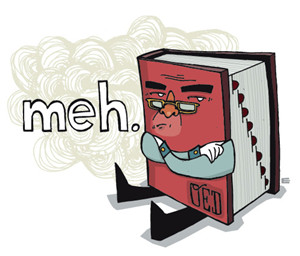
今天《词汇大师》讨论的是美洲原住民对英语的影响……
Broadcast on COAST TO COAST: September 23, 2004
AA: I'm Avi Arditti with Rosanne Skirble, and this week on Wordmaster: with the National Museum of the American Indian opening in Washington, we look at Native American influence on the English language.
RS: Linguist Marianne Mithun is author of the book "The Languages of Native North America." She's a professor at the University of California, Santa Barbara.
AA: Professor Mithun says the Europeans who came to North America had to borrow native words to describe lots of things, including places.
MARIANNE MITHUN: "One of the first contacts the Europeans made when they came to the New World (involved) Jacques Cartier, who sailed up the St. Lawrence River and ran into some people and said 'where is this?' or 'where are we?' And they said something like 'ganada,' which is the Mohawk word now and the word in other related languages for a settlement or a town. And so they wrote it down and said 'we must be in Canada.' Ohio, that's another Iroquoian word, which means large river or large creek. And so it was the name of the river first and then became the name of the state. Kentucky is another one, which means prairie or meadow or garden."
RS: "So the people who came to this land, they didn't have names for places and they probably didn't have names for some of the plants (because) they didn't know what they were."
(VOA photo - R. Pentola)
MARIANNE MITHUN: "That's right. So some of those are things like squash and hickory — these are Algonquian, so these are from the east — hominy, persimmon, pecan."
RS: "Are there any idioms that may endure now that have gone through or ways of describing things that are not either places or animals or plants."
MARIANNE MITHUN: "That's tricky. I should say there are cultural things; the other kind of thing that gets borrowed a lot is, if you want a name for something that only the native people use, and so we have a lot of those — like moccasin, for example. That's a regular word for shoe, but now it means a special kind of shoe. Things like powwow, tomahawk. Eskimo gives us things like kayak and mukluk and anorak."
AA: "And what's interesting is that I suppose in modern times now to use some of these terms, perhaps in jest or however, might actually be considered offensive to Native Americans."
MARIANNE MITHUN: "Absolutely. In fact, a very good example of that is squaw. That's a regular Alongquian word for woman."
RS: But Professor Mithun says the term squaw as used by Europeans took on different connotations over the centuries, so that now people often think of it as being derogatory.
AA: Marianne Mithun is not Native American herself, but she works with different native languages to help document them.
MARIANNE MITHUN: "A lot of people don't realize how many languages there were here and still are here. There were probably around 300 different languages in North America."
AA: "How many of those 300 languages still exist?"
MARIANNE MITHUN: "About 180 right now — and I say about, because we're losing them all the time. It's not how many speakers you have, it's how old they are. So if all of your speakers are over 80, you can see how many years you might have left. Almost all of the languages in North America are endangered. There's only one (native) language in North America that isn't endangered, and that's Greenlandic. What this means is that either children are no longer learning them as a first language, which is the case for almost all of them, or fewer children are learning them every year.
"So we think of Navajo, for example, as being very healthy because there are more Navajo speakers than of all other North American languages combined. There are over 100,000 Navajo speakers. But in the early '90s most children came to school knowing Navajo as their first language. Now very few come to school with Navajo as their first language. So even Navajo, which seems to be the strongest outside of Greenlandic, is in danger.
"It's sort of obvious parents want to help their children get ahead, and they themselves had a hard time because they didn't speak English, so they want their children to speak English. And the problem is that people haven't realized that being bilingual can be a very powerful thing."
RS: Marianne Mithun is a linguistics professor at the University of California, Santa Barbara, and author of "The Languages of Native North America." Now, in case you're wondering, mukluks are animal-skin boots that Eskimos wear. And an anorak? It's a type of jacket with a hood.
AA: And that's all for us this week. Our e-mail address is word@voanews.com and you can find all of our segments at voanews.com/wordmaster. If you'd like to visit the new National Museum of the American Indian online, go to americanindian.si.edu. With Rosanne Skirble, I'm Avi Arditti.












